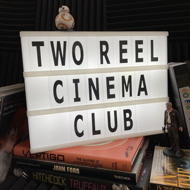We take two dark journeys into the American West in this episode as we watch the new Martin Scorsese picture Killers of the Flower Moon, and compare it to Sergio Leone’s 1969 classic Once Upon a Time in the West. It’s an epic total of six hours of gunshots, dirt, crime, money, corruption and revenge, all in Cinemascope. But which film is a textbook in cinematic story telling? Does either film justify its run time? Which actor do we consider the Big Mac of movie stars? And why do we both wish we were Charles Bronson?
Plus a word about socks with fingers, a rewatch of a Studio Ghibli classic for Halloween, a namecheck for 80s TV series Hart to Hart, a rival podcast from Malcolm Gladwell, and a serious question: isn’t the term ‘Spaghetti Western’ a bit racist?
If you enjoyed the show, find us on social media:
Instagram: @tworeelcinemaclub
Contact us at [email protected]
Or come to our website, where we’ll be writing about the movies we cover in the show and a few more things besides: https://tworeelcinemaclub.com
